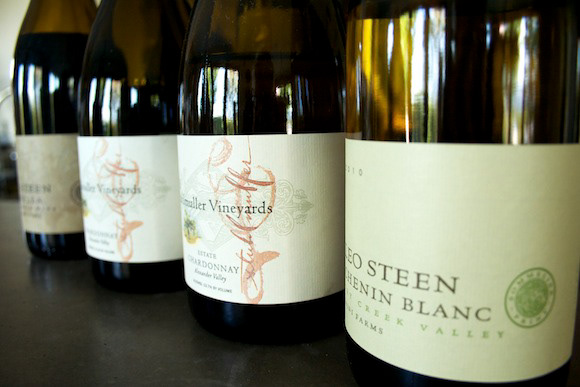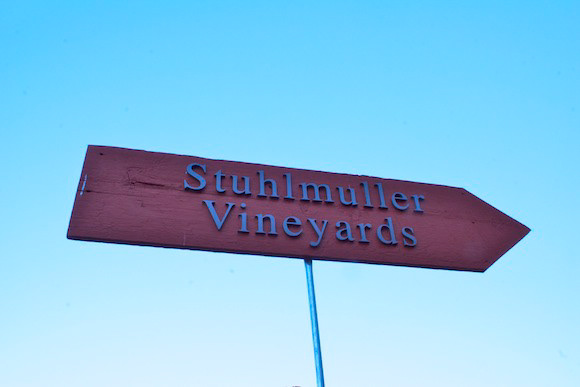

9th November 2011
Behind every wine is a story – even the cheapest, nastiest white Zinfandel. The stories aren’t always that interesting, of course. Fortunately, though, many are captivating – from a simple vision to triumph over adversity. That’s what fascinates me, and clearly many of the other participants at this year’s European Wine Bloggers Conference (EWBC) where the theme was “storytelling”.
The conference kicked off with a BYO dinner where participants brought along a wine – or in many cases wines – that had a meaning to them. Some brought along wines from their home countries like Poland and the Netherlands, others brought along wines from the 70s and 80s and some bought along wines they promoted (such as Charles Heidsieck and Graham’s Port – not complaining!). The wine I brought along seemed humble in comparison to many that evening, and perhaps I felt a little self conscious as a result – keeping the story pretty much to myself.
So let me redress the imbalance.
A few weeks earlier I was having dinner in Sonoma, California, when I was served a local Chenin Blanc with one of the courses. A Leo Steen Dry Creek Valley Chenin Blanc 2009. It was good. Not stunning. Just good. I was intrigued that someone was growing Chenin Blanc here. The next day, as I was planning which cellar doors to visit, I looked up the winemaker – Leo Hansen – and saw that he was a) Danish b) a former sommelier (including a stint at the Dry Creek Kitchen in Healdsburg where I first tried his wine c) had a nice looking website and d) had no cellar door. I called anyway and left a message, never expecting to hear back.
Later that afternoon I did get a call back – from his wife who gave me his mobile phone number and said I should try him after 9.30pm. I hummed and haa-ed a bit. It just felt a bit intrusive and when I did call, I went straight to voicemail. The next morning I had a new resolve. I was interested. I called and finally spoke to Leo, who suggested I come over late afternoon to where he worked – another winery, Stuhlmuller in the nearby Alexander Valley.
That’s how we came to be, at the tail end of a hot weekday – when the cellar door was closed, sampling almost every wine Leo makes for Stuhlmuller Vineyards – and the two he currently makes under his own label – chewing the fat about terroir, vineyard techniques and Scandinavian restaurants in London.
I’d never heard of Stuhlmuller and certainly hadn’t expected so many bottles to be opened. They were simply some of the best wines I tried on that trip. Looking at my notes, I’ve written “fresh boiled corn drenched in unsalted butter” for the heavenly nose of the 2009 Estate Reserve Chardonnay (the wine needed another three years in bottle before drinking well). For the Estate Cabernet 2008: “Beautiful blackcurrant, perfumed, fragrant, lush, long finish, bit of tar, some drying tannins.” I even quite liked the sweet richness of the Zinfandel, which is pretty much the style round here – but perhaps because the bottle was a little cool. “Like a really juicy black cherry,” say my notes.
As we tasted, we learnt how Leo decided to make a Chenin Blanc based on his sommelier experience in Denmark, when he wished he could offer diners an alternative food-friendly and affordable dry white to the ubiquitous Pinot Grigio, and pricier Sancerre and Chablis. And that’s exactly what he had delivered with his Leo Steen Chenin Blanc (Steen is his middle name). The 2010 is crisp, with flavours of soft apples and grapefruit, and a decent finish, all for around $18 USD. You would never have guessed it came from California if it didn’t say so on the label, and just shows how it doesn’t all have to be big, jammy, oaky, high alcohol wines. Which is what I was trying to show at the EWBC.
His other wine, Calpella 2009, is a blend of Carignane (the ‘e’ gets added across the Atlantic) and Petit Sirah. Not an easy sipping wine, this needs food – exactly what it is designed for. We had some later that night with steaks at Shimo in Healdsburg. Our only regret? Not taking along the bottle Leo had opened for us. There was a BYO option.
What I loved most about the experience was the willingness to share wines with strangers who call out of the blue. His wines are a limited supply. They’re mostly sold to US restaurants, though you can buy from the vineyard. And although I said I had a blog, I didn’t make a commitment to write a word about him. That’s the thing about wine. It brings people together. Not just for the act of drinking. But to share the stories behind the wines. No matter how simple the stories. No matter how simple the wine.